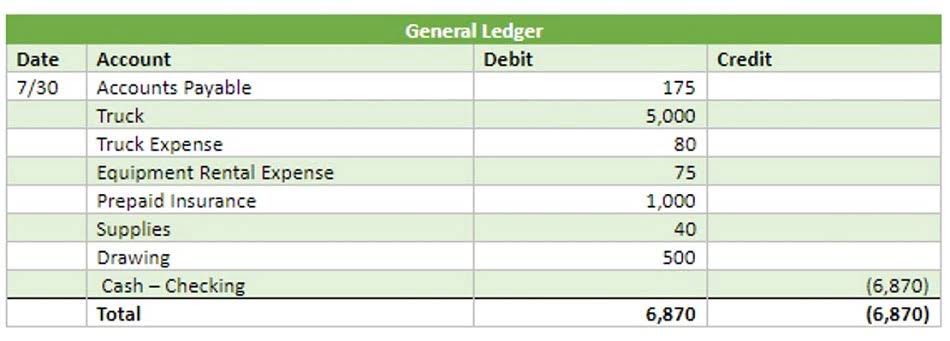
This comparison will allow you to see how well your company performs in relation to Grocery Store Accounting similar businesses in terms of generating and managing cash flows. In this article, we will guide you through the process of performing a vertical analysis of your cash flow statement. We’ll start by explaining the various categories included in a typical cash flow statement and their significance.
- By conducting a vertical analysis, you’ll be able to assess the different components of your cash flow statement and gain insights into how efficiently your company generates and uses its cash.
- Vertical analysis is used in order to gain a picture of whether performance metrics are improving or deteriorating.
- Vertical analysis looks at the contributing percentage of each line item to the total base figure.
- Vertical financial statement analysis is a valuable tool for evaluating the financial health and performance of a company.
- Expressing each income statement line item as a percentage of total revenue shows the relative proportion of revenue that is absorbed by each expense or cost.
- Vertical analysis, when combined with other analytical methods, empowers you to make informed decisions, evaluate financial performance, and drive business success.
- Understanding this component allows you to assess how well you are allocating capital towards growth opportunities or divesting non-essential assets.
Can vertical analysis of the cash flow statement help me in making informed financial decisions for my business?
- For example, write “79 percent” in the column to the right of the net income dollar amount of $95,000.
- Vertical financial statement analysis is particularly useful when comparing companies within the same industry.
- For example, by comparing the percentages of cost of goods sold and operating expenses, analysts can determine the efficiency of a company’s operations.
- A startup might have high operating expenses as a percentage of revenue due to initial investment in growth, while a mature company might have lower percentages due to established operations.
It involves assessing potential expenditures and determining their vertical analysis profitability to ensure that resources are allocated effectively. Understanding the difference between fixed and variable costs is essential for managing a business’s finances. These costs form the foundation of any cost structure and play a critical role in pricing, budgeting, and profit margin analysis.

Evaluating Investing Cash Flow

By monitoring these percentages, stakeholders can proactively address issues before they become major problems. Yes, vertical analysis provides insights into historical trends and proportions balance sheet of line items, which can be used for forecasting and trend analysis. The analysis can be carried out on any of the financial statements but is usually performed on the balance sheet and income statement.
- On the balance sheet, the current assets to total assets ratio indicates what percentage of assets can be quickly converted to cash to meet short-term obligations if needed.
- In the realm of financial scrutiny, one analytical approach stands out for its ability to provide a proportional understanding of financial statements.
- Consider a scenario where net income is \$100,000 against net sales of \$700,000, resulting in a net profit margin of 14.29%.
- To provide context for your findings, we will also discuss comparing the results of your vertical analysis with industry benchmarks.
- Interpreting the results of vertical analysis involves assessing the significance of changes in line item percentages over time or in comparison to industry benchmarks.
- Write each dollar amount from the prior period’s cash flow statement in the column to the right of the percentages on the most recent cash flow statement.
- Understanding the implications of these percentages requires a careful examination of the company’s financial health and performance from various angles.
Conducting Vertical Financial Statement Analysis
By comparing line items in consecutive years, analysts can pinpoint significant fluctuations, which may indicate underlying trends or potential areas of concern. Vertical analysis helps in understanding the composition of financial statements, comparing companies within the same industry, and assessing the relative significance of line items. It does not consider external factors such as industry trends, economic conditions, or competitive forces. Additionally, comparing line items as a percentage of a base amount may not provide a complete picture of a company’s financial health. Therefore, vertical analysis should be used in conjunction with other financial analysis techniques to gain a comprehensive understanding of a company’s performance. When conducting vertical analysis on the balance sheet, each line item is expressed as a percentage of the total assets.

When using this alongside horizontal analysis, you can get a full picture of a company’s financial position. This integrated approach links operational efficiency, profitability, and cash flow management. For instance, you could examine how changes in asset turnover (from DuPont analysis) correlate with changes in operating cash flow percentages. Vertical analysis is a valuable tool for investors who are looking to gain insight into a company’s performance over time. By comparing different items on the income and cash flow statements, you can get an idea of how the company manages its resources and identify potential opportunities or risks.
Leave a Reply